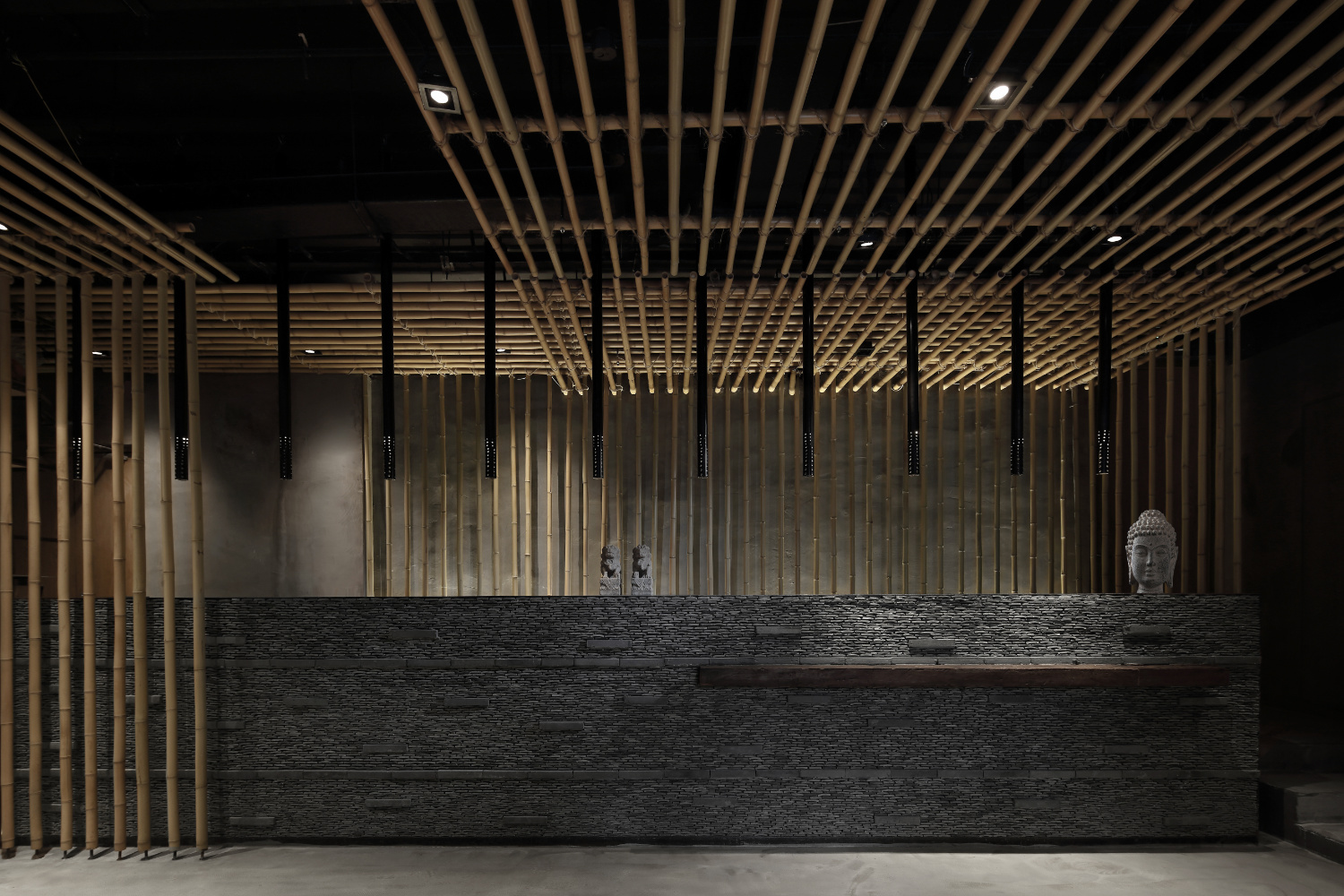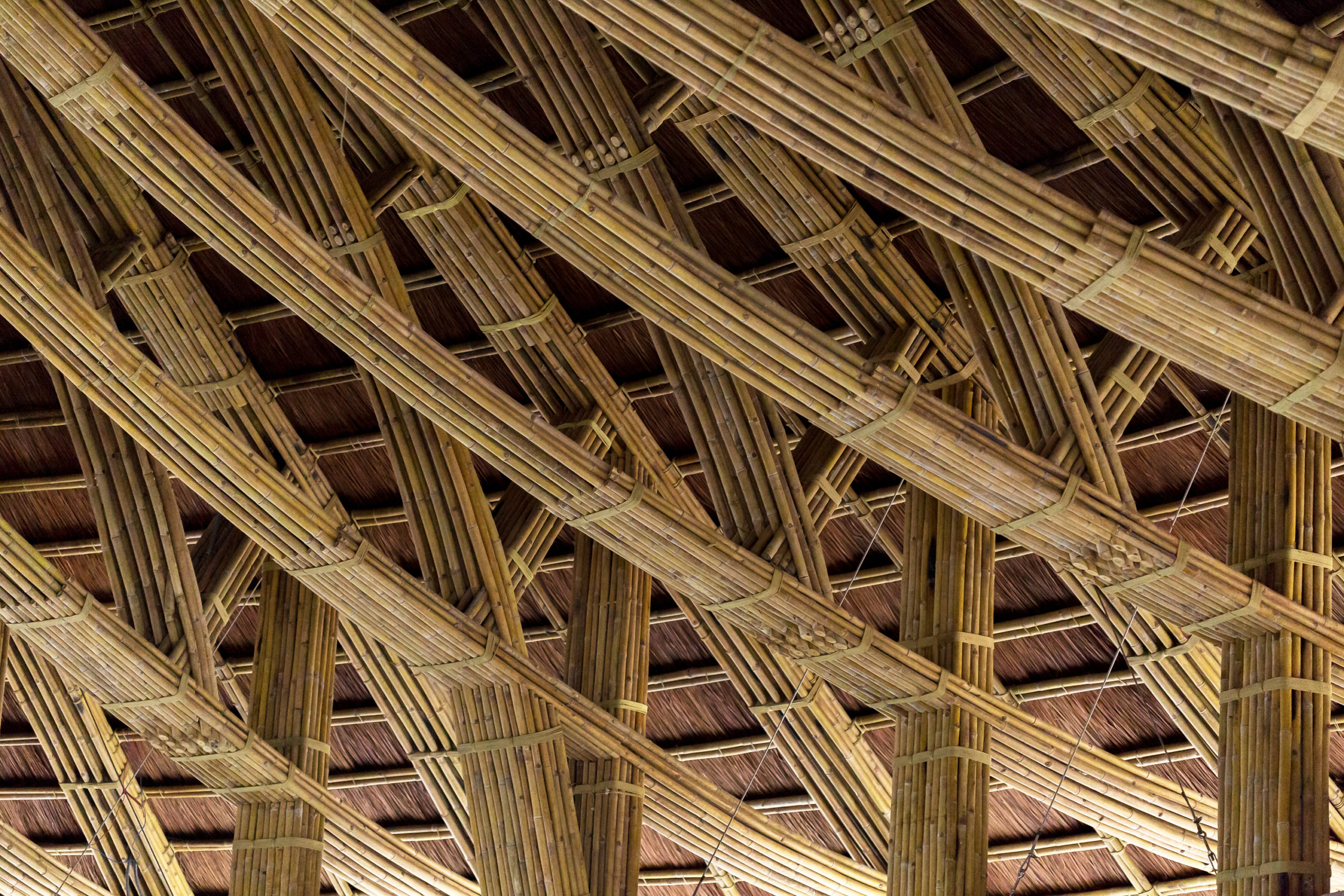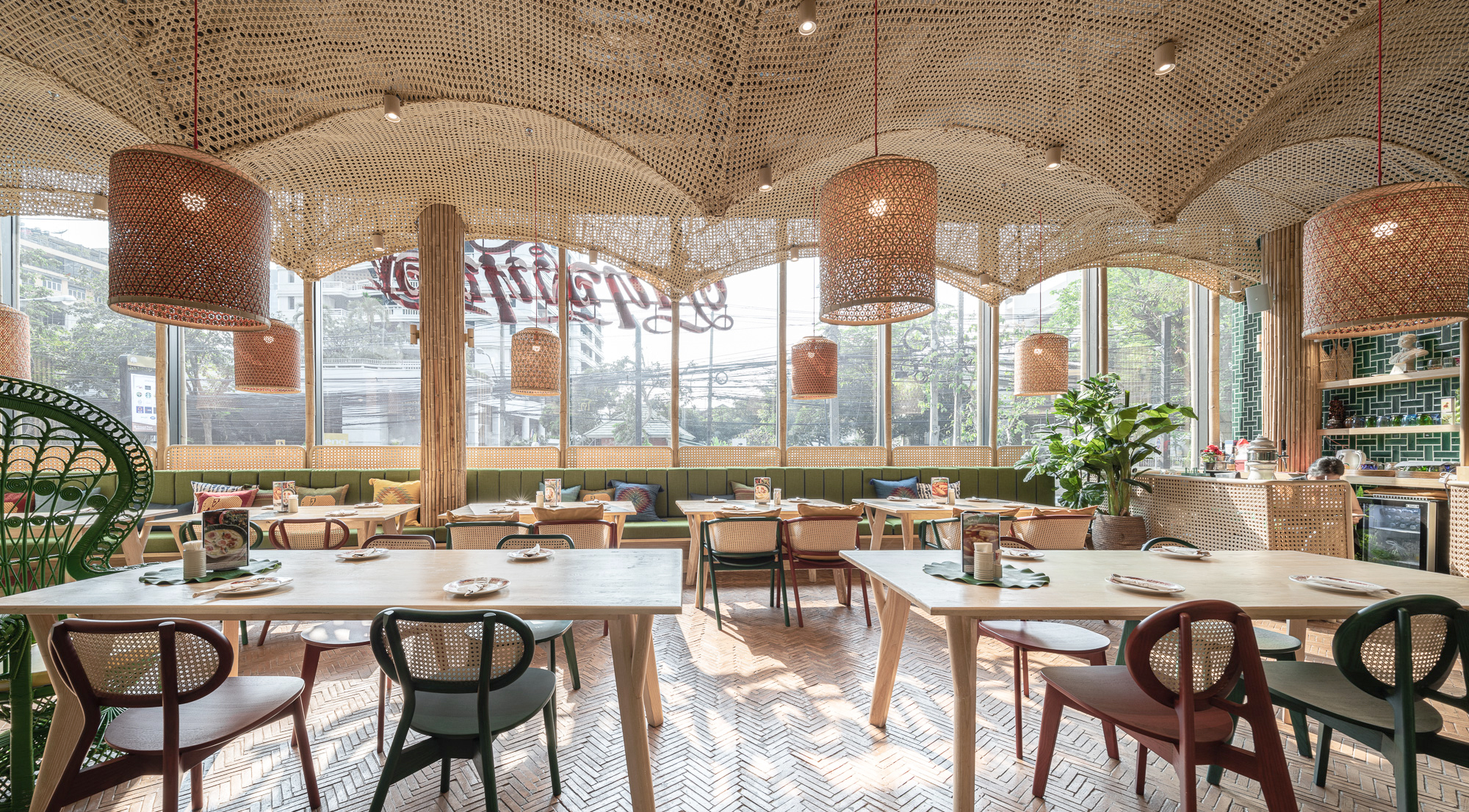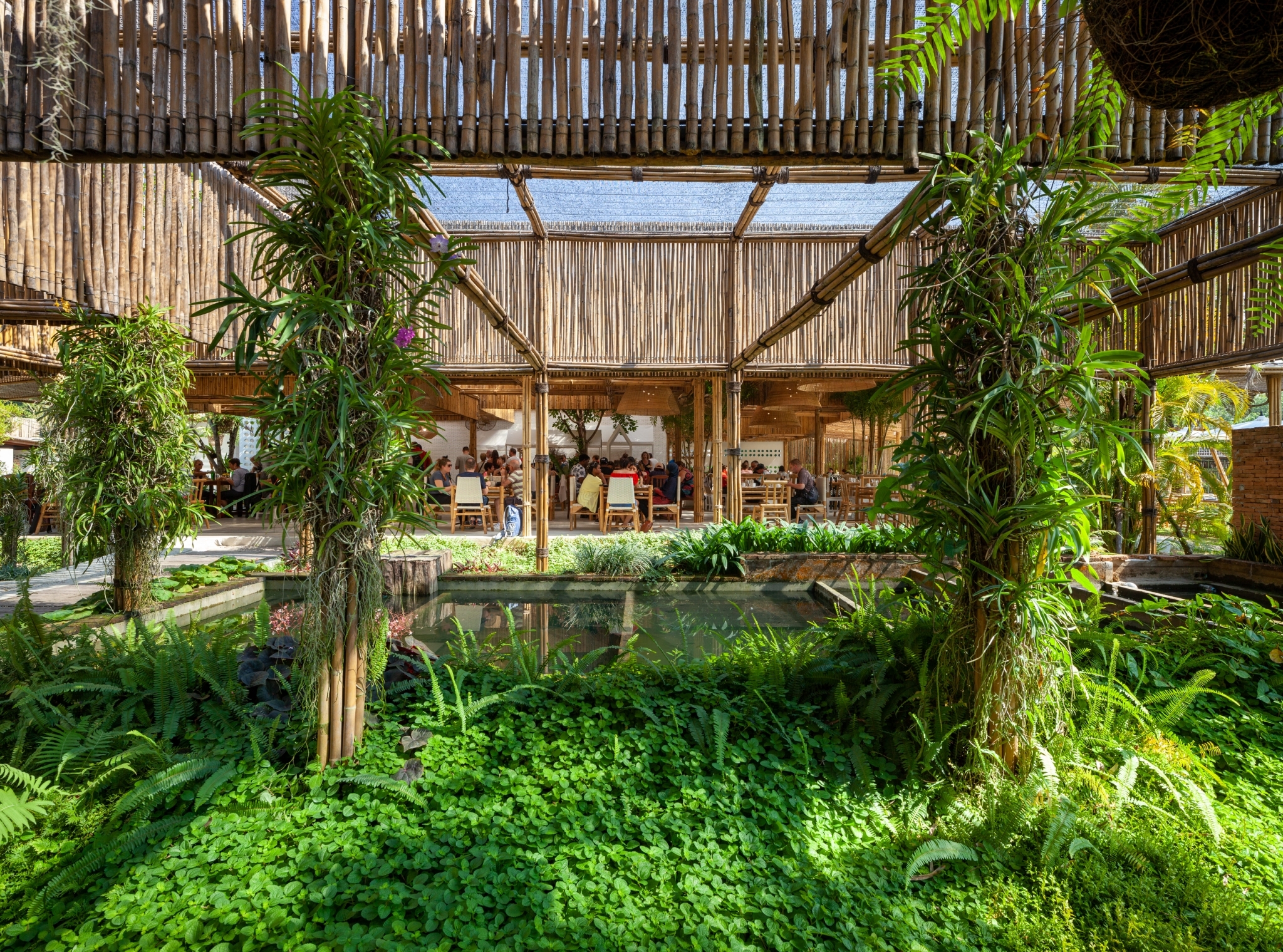Call for entries: The 14th Architizer A+Awards celebrates architecture's new era of craft. For early bird pricing, submit by October 31st.
Bamboo has been widely used in traditional homes in parts of Asia due to its fast-growing nature and climate-friendly qualities. Homes of the Dai ethnic group in Thailand, Indonesian Tongkonans and stilt homes in parts of India are just a few examples.
The material can be used at every stage in design, from the structural framework to handwoven storage solutions. Apart from being extremely durable and sustainable, it is especially useful in hot and humid climates and can also be a more affordable alternative to other construction materials in certain geographies. Its eco-friendly properties have drawn the attention of several contemporary architects over the years.
You can bend it, bind it, weave it and stack it to create endless geometries. CRG Architects even conceptualized a city filled with bamboo skyscrapers. Below are a few examples where designers have used bamboo to create inviting and charming restaurants that keep customers coming back for more.

 Bamboo’s Eatery by Minggu Design, Nanjing, China
Bamboo’s Eatery by Minggu Design, Nanjing, China
This multi-level restaurant features bamboo inside as well as on its façade. The material is used in different ways throughout the structure — as wall cladding, ceiling decoration, partitions and detailing in fixed furniture — in a very modern and minimal manner. See-through dividers help create intimate nooks in the Tea Break area. These light columns, when juxtaposed with the dark backdrop, add a theatrical flair to the entire space. The use of materials and minimal geometry makes the ambience appear chic and timeless.


Images by Le Anh Duc
Roc Von Restaurant by Vo Trong Nghia Architects, Hà Nội, Vietnam
Taking a more traditional approach to design, this restaurant is made up of a series of tall bamboo vaults lined up in a curved arc. At the center of this curve, perched on the edge of the adjacent lake, is a small stage for events. The design harmoniously harnesses two different species of bamboo, Tam Vong and Luong, which were both treated using traditional Vietnamese procedures to ensure high-quality construction and durability. The pathways between the columns help ventilate the area naturally with the breeze from the lake.

 Dongshang by Imafuku Architects, Beijing, China
Dongshang by Imafuku Architects, Beijing, China
Popular Winner, 2019 A+Awards, Bars & Nightclubs
The use of bamboo in this restaurant is a nod to Chinese and Japanese arts. The studio attributes the use of the material to Chinese philosophy, which deems it a good choice to create a calming atmosphere and bring people together. A bamboo arcade leads way to the main dining area where bamboo is used to create a lattice on the ceiling and cover a part of the walls. Black stone and furniture make it look like a contemporary speakeasy.

 Kim Boi Bamboo Restaurant by Bambubuild, Hòa Bình, Vietnam
Kim Boi Bamboo Restaurant by Bambubuild, Hòa Bình, Vietnam
Reminiscent of a conical Vietnamese hat, this eatery is dominated by a tapered bamboo roof that is placed on top of a 12-sided polygonal base. The concrete framework was already present on-site, having been abandoned for years due to an economic crisis. Additional bamboo columns were added to this concrete frame to support the roof structure. Lashing and bamboo bolts were used to create the frame using vernacular construction techniques and this construction was connected to the concrete structure using metal pipes and iron pins. A large skylight sits in the middle of the leaf-covered roof.

 Tum Thonglor by Context Studio, Bangkok, Thailand
Tum Thonglor by Context Studio, Bangkok, Thailand
Vernacular meets contemporary in this collaboration between the studio and women from the Traditional Bamboo Handicraft Center. The design of this restaurant brings in elements of the lifestyle of Thai farmers with its neutral tones, woven bamboo decor and banana leaves. The rattan ceiling is inspired by traditional rice steamers and the red and green elements are reflective of the flavors of Esarn food.

 Arrom Orchid by Studio Miti, Chiang Mai, Thailand
Arrom Orchid by Studio Miti, Chiang Mai, Thailand
Studio Miti revived an old structure present on the orchid farm. The availability of bamboo in the region made it the ideal material to create a lightweight structure that works in harmony with the orchid plants around. Woven ceiling panels filter in light during the day. The use of materials and the openness of the design create a warm and soothing environment for guests to relax in.


Images by Trieu Chien
Nocenco Café by Vo Trong Nghia Architects, Vinh, Vietnam
A large bamboo canopy and decorative vaults were added to the upper floors of a seven-floor concrete building, creating a new language of architecture in the neighborhood. Bamboo stems fan out in leaflike forms and converge to create a dome that is easily recognizable by those passing by the building. The floor below is enhanced with bamboo columns that cover the existing structural system and create a cave-like form.

 Hom Pla Pao by FLAT12x, Bangkok, Thailand
Hom Pla Pao by FLAT12x, Bangkok, Thailand
Surfaces made from bamboo greet the visitors when they pass by this restaurant. Bamboo wall panels and Thai mats are the core décor elements in this project. The design was focused on capturing the true essence of street food by using handcrafted décor and furniture that reminds visitors of being outdoors.
Call for entries: The 14th Architizer A+Awards celebrates architecture's new era of craft. For early bird pricing, submit by October 31st.

 Bamboo's Eatery
Bamboo's Eatery  Dongshang
Dongshang  HOM PLA PAO
HOM PLA PAO  KIM BOI BAMBOO RESTAURANT
KIM BOI BAMBOO RESTAURANT  Roc Von Restaurant
Roc Von Restaurant  Tum Thonglor
Tum Thonglor 


